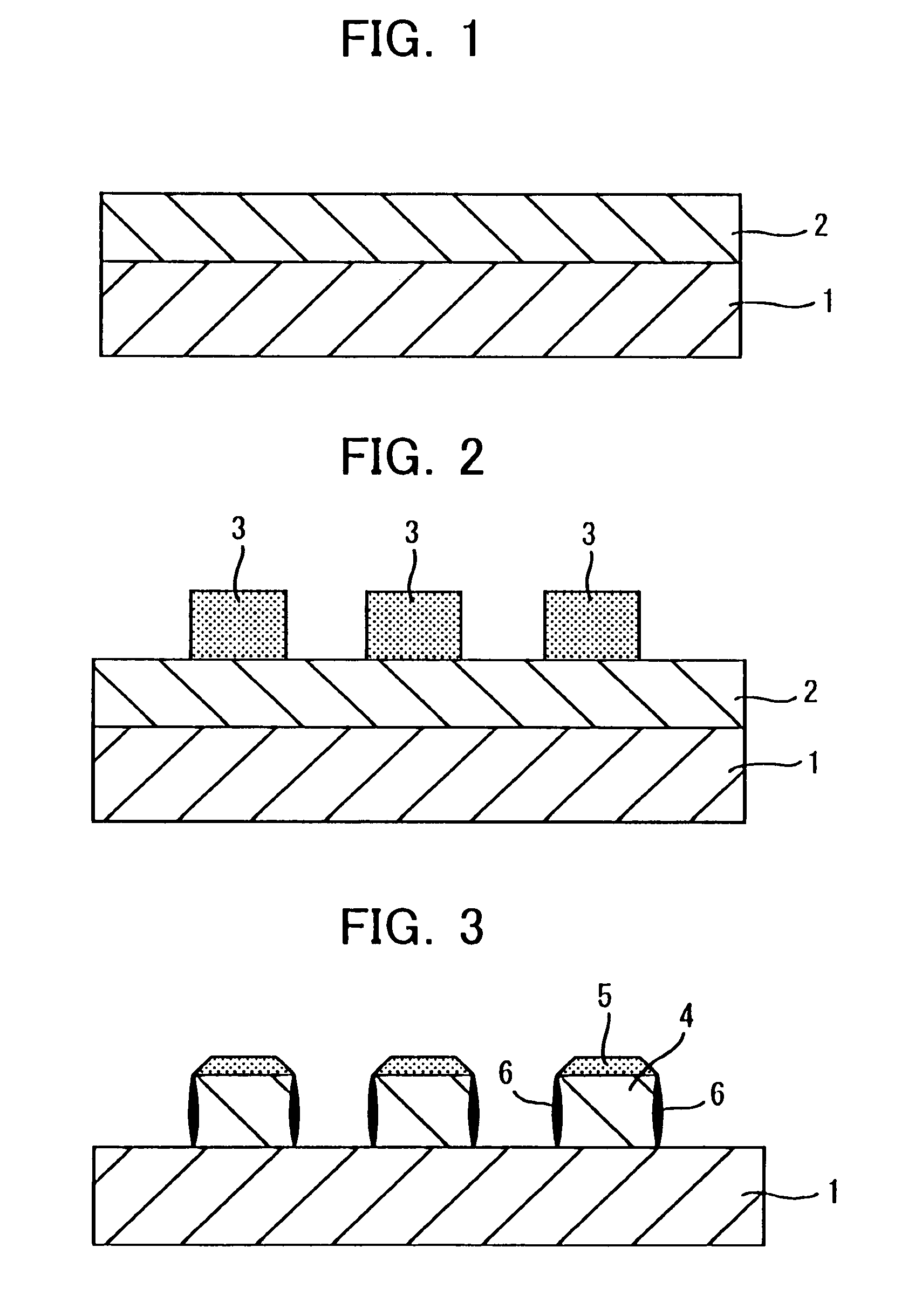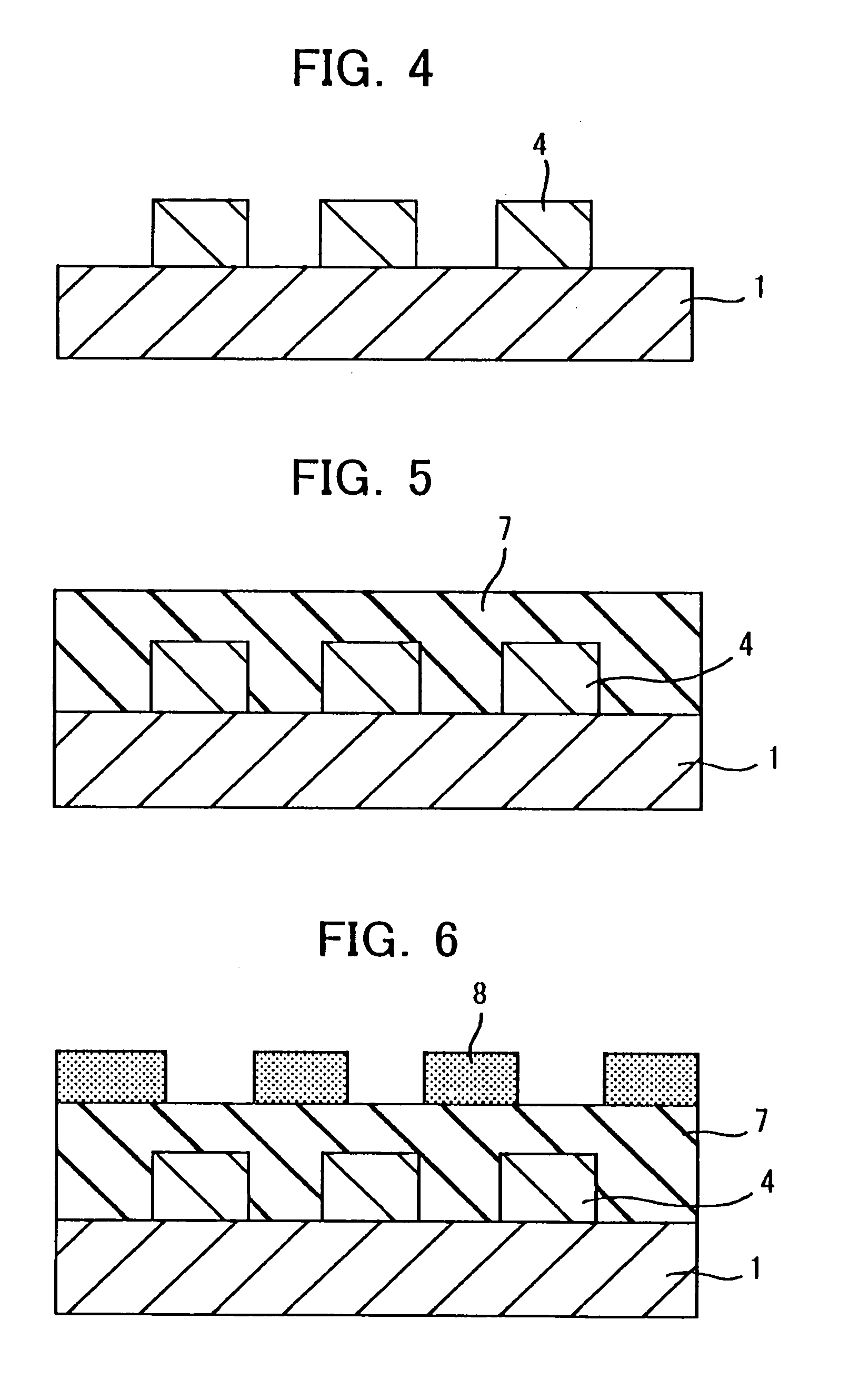Resist stripping composition and method of producing semiconductor device using the same
a technology of resist stripping and composition, which is applied in the direction of photomechanical equipment, photosensitive material processing, instruments, etc., can solve the problems of weak or corrosive resistance, reduced yield, and etching action on alumina, so as to suppress the rise of line resistance, reduce the width of interconnects, and reduce the effect of etching action
- Summary
- Abstract
- Description
- Claims
- Application Information
AI Technical Summary
Benefits of technology
Problems solved by technology
Method used
Image
Examples
example 1
[0047]In the present example, metal interconnects were formed on a base substrate formed in advance with transistors and other devices and the cleaning effect was confirmed. The process of production up to the formation of the first interconnect layer is as follows (see FIG. 1 to FIG. 4).
[0048]Formation of metal interconnect film->dry etching->resist ashing->chemical treatment->pure water rinsing->drying
[0049]The metal interconnect film was made the following five-layer film and was formed by magnetron sputtering.
[0050]Ti 20 nm (0.52 Pa, 2 kW, Ar 35 sccm, 300° C.)
[0051]TiN 20 nm (0.78 Pa, 6 kW, N2 42 sccm, Ar 21 sccm, 300° C.)
[0052]Al-0.5% Cu 500 nm (0.52 Pa, 15 kW, Ar 65 sccm, 300° C.)
[0053]Ti 5 nm (0.52 Pa, 2 kW, Ar 35 sccm, 300° C.)
[0054]TiN 100 nm (0.78 Pa, 6 kW, N2 42 sccm, Ar 21 sccm, 300° C.)
[0055]The dry etching is a step of processing the metal interconnect film to a predetermined pattern. We formed a resist pattern by photolithography and used this as a mask for processing...
example 2
[0103]The composition of the resist stripping composition was changed as follows. Otherwise, the same procedure was followed as in Example 1 to produce a semiconductor device.
[0104]Resist stripping composition:[0105]Ammonium fluoride 0.05 wt %[0106]N,N-dimethylacetamide 40.0 wt %[0107]Diethylene glycol mono-n-butyl ether 51.0 wt %[0108]Xylitol 1.0 wt %[0109]Balance water, pH 8.7
[0110]We measured the line resistance-yield characteristic of the metal interconnects in the semiconductor device produced as explained above. FIG. 12 is a graph showing the relation between line resistance and yield in Example 2 (EXP2) compared with the prior art (PA). The ordinate is the cumulative probability (CP), while the abscissa is the line resistance (LR). We measured the characteristic by dense interconnect TEG of a line and space of 0.22 μm / 0.24 μm. As illustrated, it became possible to suppress a rise in the line resistance compared with the prior art. As a result, it was learned that the desired ...
PUM
| Property | Measurement | Unit |
|---|---|---|
| Concentration | aaaaa | aaaaa |
Abstract
Description
Claims
Application Information
 Login to View More
Login to View More - R&D
- Intellectual Property
- Life Sciences
- Materials
- Tech Scout
- Unparalleled Data Quality
- Higher Quality Content
- 60% Fewer Hallucinations
Browse by: Latest US Patents, China's latest patents, Technical Efficacy Thesaurus, Application Domain, Technology Topic, Popular Technical Reports.
© 2025 PatSnap. All rights reserved.Legal|Privacy policy|Modern Slavery Act Transparency Statement|Sitemap|About US| Contact US: help@patsnap.com



